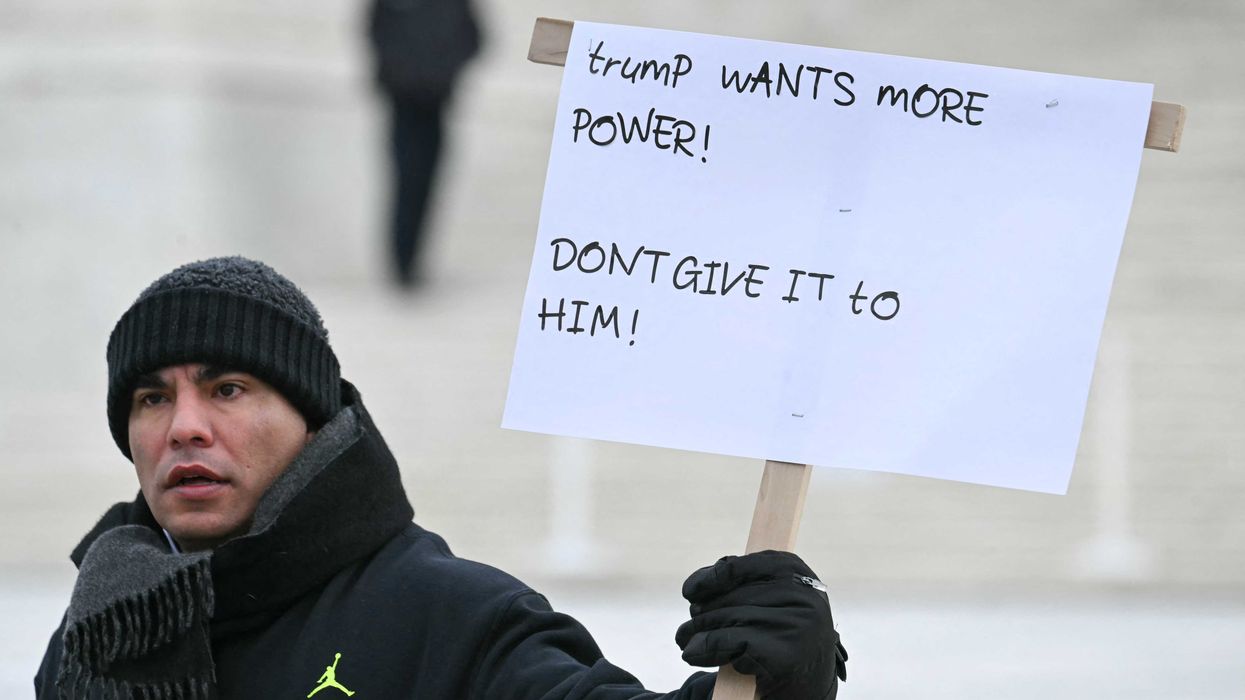GLENN: By the way, this is from the Christmas album, Believe Again, which is a great, great CD. Grab it for Christmas, available, you know, on Amazon and everything else.
One of the things that has been really remarkable to me, this year, is our fascination on space. From Elon Musk and what he is doing to go to Mars and last -- what was it? Last Friday. We sent something up for the International Space Station, and we used Elon Musk SpaceX. And to watch that thing launch. And within I think ten minutes, you know, the booster rocket was back landing on the launch pad. It was absolutely phenomenal.
There's something else that's going on. And that is what the New York Times released this last week, which was, are we alone? And the money that the government has spent looking at UFOs. And one of the guys who is a career intelligence officer, he worked with the U.S. Army, the Department of Defense, the national counterintelligence, director of the national intelligence. He was a special agent in charge. Blah, blah.
He has been around this. Now, he is with To the Stars Academy and the director of global security. Luis Elizondo. Hello, Luis, how are you, sir?
LUIS: Good, Mr. Beck. How are you, sir?
GLENN: Very good. So, I would tell you to call me, Glenn. But you're a career military man, so I have a feeling it's going to remain Mr. Beck.
Luis --
LUIS: Old habits are hard to break. Sorry.
GLENN: I know. I know. Thank you for your service, by the way.
Tell me -- tell me what -- do we believe that there is life that is visiting us, or is this hype?
LUIS: Well, when you say "we," let me clarify, at least just from my perspective. Because I -- I certainly can't speak on behalf every American.
GLENN: Yeah, yeah.
LUIS: I certainly don't pretend to. And as far as speaking for the department, it's been about two months now, since I've been out of the Department of Defense.
So I certainly can't speak on behalf of the department. But what I can do is speak on behalf of my myself and I think on behalf of my colleagues that work this particular portfolio.
And I think the -- the evidence at this point is -- is quite overwhelming.
I think as we -- as we are entering this -- as you said just now, kind of this new era of space, I think we -- we are entering a new era where -- where the evidence is, quite frankly, overwhelming.
GLENN: Yeah. You know, we saw -- we saw the video that they released. And I would imagine that there's maybe even more compelling stuff than that.
But we saw the video. And, you know, the -- the airman talking about -- look at this. It has -- it has no wings. I've heard you talk about, you know, seeing things and having, you know, documented footage of things without a propulsion unit, no -- you know, no wings. No surface. You know, that we would recognize as -- as anything that would keep anything afloat.
Is this the most compelling thing that you have? Is this video. Or is there more that you have seen?
LUIS: Yeah, no. There's significantly more. These two videos that are out in the public domain are simply just a very, very small sample of the collective amount of information that we have over the years.
GLENN: So, Louis, was there a conversation in the agency, or in this group, of -- we -- we need to tell the American people. This is not information that the government should hoard. This is really kind of important stuff.
LUIS: Well, I think that's a fantastic observation, and my perspective, it may be a little bit more selfish. And that was, I needed to be able to tell, the most senior levels of DOD leadership. Please, keep in mind that, you know, as a former soldier and employee of DOD, my loyalties are first and foremost to the American people. Second, is to the Department of Defense. And third is to the Secretary of Defense.
In this particular place, we're in a situation where this country has never had a better secretary of defense, in my opinion. And, yes, I'm a little biased, but I think I can say that, because I served with the man and I've seen him in combat situations.
So my loyalty to the boss is paramount. And when you are in an organization, a department where silos and stovepipes restrict the ability to give the top commander the information he or she may need to make critical decisions, regardless of resources, we have an obligation to make sure that we have that ability.
GLENN: So what -- what kind of decision would they -- would somebody in the Defense Department need to know this information? I mean, have you seen hostility or -- or what?
LUIS: Well, I'll get to that piece in a second. And the answer in short is we haven't seen any overt hostility. But keep in mind, in DOD, we are a national security organization. And so I don't want to say we get paid to be paranoid.
GLENN: Sure.
LUIS: But we definitely get paid to make sure things aren't a threat. So if we're not sure it's not a threat, then we have to presume, it could be a threat. Not that it is. But it could be.
GLENN: Yeah.
LUIS: And so we need to understand how these things work. And from my perspective, you know, our secretary is a guy who likes more information, not less.
And I think the issue really being the stigma within the department. Secretary Mattis inherited a wonderful department, but a department that no less over seven years has developed some silos and stovepipes. And the things that DOD does very well, obviously, looking at define threats, which is terrorism and potential nuclear weapons and chemical weapons and proliferation of issue de jure, the one thing that it's not very comfortable with are those things that are very hard to define.
They tend to be a bit nebulous. Things that we tend to say, look, we don't know what it is. We don't know how it works. And we're not sure we can do anything to stop it.
GLENN: Go ahead.
LUIS: No. Please go ahead. I'm sorry.
GLENN: What is the most amazing thing that you -- you know, it's one thing to say, well, we don't know if it's a plane or something.
What is the most amazing thing that you saw, that you would be comfortable sharing with us?
LUIS: Sure. And thank you for saying that. Because I will caveat that. I still have a security clearance, or at least now.
GLENN: Yeah, sure.
LUIS: And I am obligated to protect any and all classified information. So whatever I share, of course, has to be -- but what I can share with you is I think just the overwhelming amount of data and reports that we have received from people who are -- keeping in mind, these are people with the highest levels of security clearances. These are people who are trained observers. They -- they fly multimillion dollar weapons platforms for their country on a daily basis. And they are the most trustworthy of trustworthy. And on top of that, these folks understand what they're looking at.
If not the fact that they just happened to be astute observers, they're actually trained observers.
And on top of that, we now have equipment that can very quickly ascertain what we're looking at, if it's an aircraft, if it's a missile, if it's a drone, to the point where we actually know what kind of drone it is.
And unfortunately, I can't go into detail and tell them that.
But with that said, the most compelling thing I've ever seen I think is -- it's a bunch of things. It's not just one thing. I think when you -- one thing is to look at an object in a rate of return or on a screen. And if you don't know what you're looking at, it's easy to say, oh, it's just a fuzzy dot, and the camera pans off screen.
When in reality, that's not what's happening. When in reality, what you're looking at, if you understand what the rate of return is telling you, infrared hot, infrared cold, et cetera, is an object that we can't get close to. It is taking evasive measures to avoid us getting close. And then when we do get close, it takes off at incredible velocities that frankly defy our understanding of logic, really.
We're talking about objects that can drop from 80,000 feet down to 50 feet in a hover. And then instantaneously jump back up to 80,000 feet. And when I say 80,000 feet, it's actually higher. It's as high as we can see it with a particular system. Of course, we have other systems that are better than that too. In this particular case, and other cases, we are seeing things that will -- that will interfere with equipment and our ability to --
GLENN: Study.
LUIS: Right. Correct.
GLENN: I only have 30 seconds. Are we going to be seeing more of this, or are they still going to keep tight-lipped? Is this pretty much what we're going to find out?
LUIS: Well, I think -- I think -- I hope that we do more as a nation to insist that we see more.
I think we need to make sure that -- that we engage who we need to engage, our leaders, and say, hey, look, this is worth investing. I hate to say it, but $22 million, that's not enough. I know everybody is getting wrapped around the axle, about the money. When really, the bigger story here is, folks, we have been looking at this stuff for a while, and it's real. And as a nation, we need to decide, is it a national security imperative?
GLENN: Former Pentagon UFO official, Luis Elizondo. Fascinating.

 JIM WATSON / Contributor | Getty Images
JIM WATSON / Contributor | Getty Images
 Joe Raedle / Staff | Getty Images
Joe Raedle / Staff | Getty Images AASHISH KIPHAYET / Contributor | Getty Images
AASHISH KIPHAYET / Contributor | Getty Images Harold M. Lambert / Contributor | Getty Images
Harold M. Lambert / Contributor | Getty Images